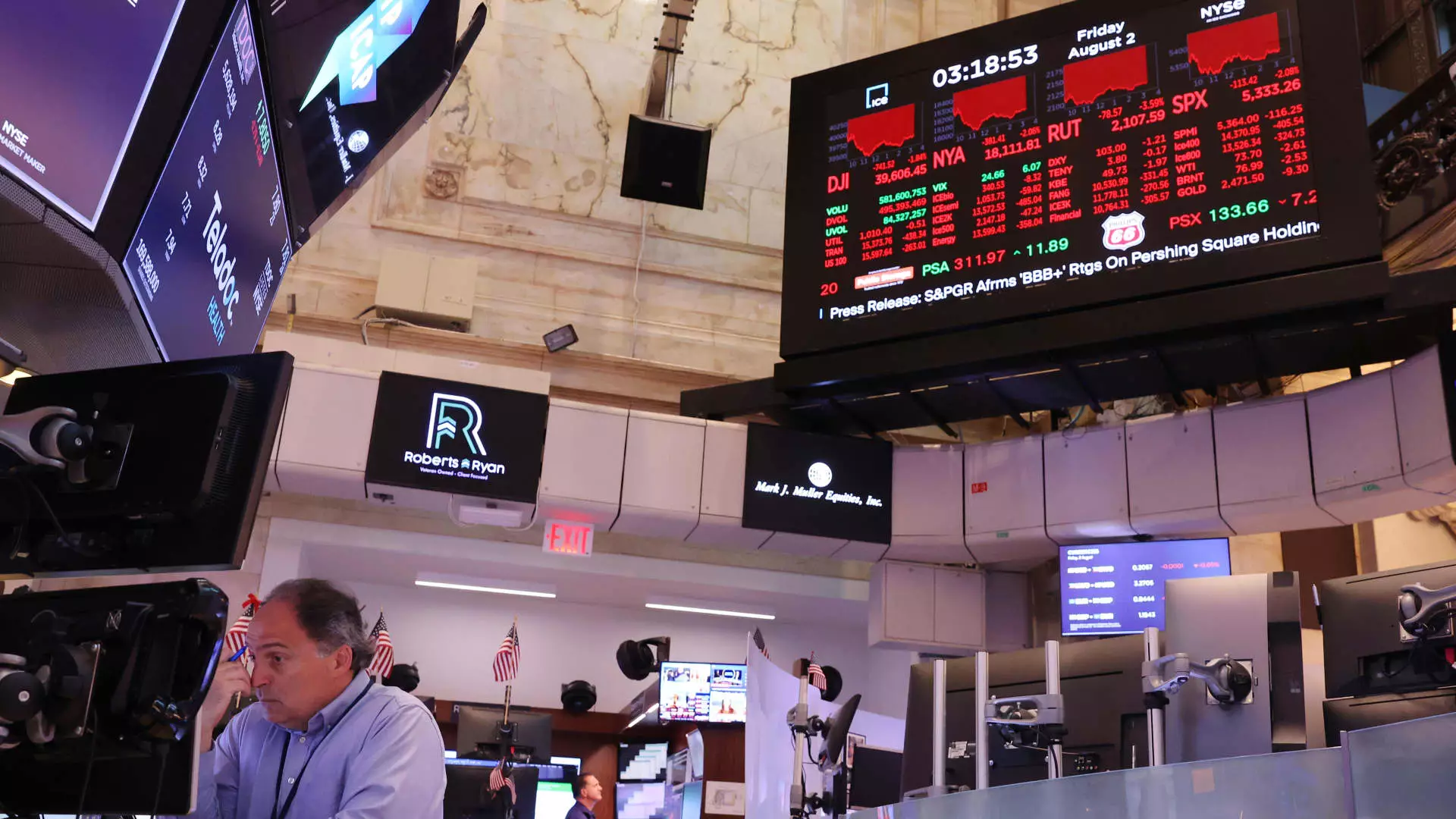The recent stock-market selloff, sparked by recession fears, has painted a bleak picture of the U.S. economy. The S&P 500 index’s 3% loss on Monday, its worst in almost two years, signals that investors are cautious about the future. Weaker-than-expected job data has fueled concerns that the U.S. economy may not be on stable ground.
The concept of a “soft landing” by the Federal Reserve, achieving tamed inflation without triggering an economic downturn, has now come into question. The rise in the U.S. unemployment rate in the recent data suggests that a “hard landing” could be imminent. While economists still believe a recession is not highly likely in the next year, the current economic indicators cannot be ignored.
To avoid a recession, experts like Mark Zandi and Jay Bryson emphasize the importance of the Fed cutting interest rates soon. The recent spike in the unemployment rate and the subsequent stock-market rout have raised concerns about a possible recession. The Sahm rule, triggered when the unemployment rate crosses a certain threshold, indicates a heightened risk of an economic downturn.
The Sahm Rule Controversy
Despite the Sahm rule pointing towards a recession, some economists argue that it may not be an accurate indicator in the current economic cycle. The rise in the unemployment rate is attributed to a larger labor force rather than weakening demand for workers. This shift in labor dynamics may not necessarily signal an impending recession.
Labor Market Trends
While there are positive signs like increased consumer spending, there are also worrying trends in the labor market. The slowing hiring rate, stagnant worker turnover, and rising unemployment claims indicate a cooling in the labor market. These red flags suggest that the job market may be in a precarious position.
Resilience of the Economy
Despite the challenges and risks, experts believe that the underlying fundamentals of the economy are still strong. Consumer spending and household financial health remain stable. Additionally, the expected interest rate cuts by the Fed in September are seen as a positive step to alleviate economic pressures.
While the looming threat of a recession cannot be ignored, there are still reasons to remain cautiously optimistic about the economy’s resilience. The mixed signals from various economic indicators require a balanced approach to navigate the uncertain times ahead.

